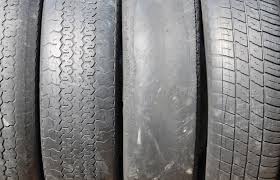Modern suspension systems form an integral part of any vehicle today, as these provide a delicate balance between comfort, handling, and stability. Suspension in most automobiles has undergone tremendous transformation from early rudimentary designs to highly advanced systems existing today. This blog talks about the chronology of suspension systems right from the leaf springs to active suspension, pointing out essential innovations and their influence on the driving experience.
Early Suspension Systems
Leaf Springs
Leaf springs are among the oldest and most basic forms of suspension systems in the history of automobiles as their invention for horse carriages was easily incorporated into cars. A leaf spring is simply a flat, curved metal strip that flexes to soak up shock. This design offers a rugged and durable solution to handling heavy loads and rough terrain easily.
The obvious disadvantage with leaf springs, however, is their significantly poor ride comfort and handling. By and large, a vehicle equipped with leaf springs will lead to a bumpy and less controlled drive. Despite these disadvantages, leaf springs remained popular due to their simplicity and cost-effectiveness.
Coil Springs
As automotive technology advanced, so did the replacement of leaf springs with coil springs. Coil springs, actually helical in shape, compress and extend to absorb shock, thus providing a smoother ride. Coil springs made their entry into the scenario in the early years of the 20th century and did not take long to outshine leaf springs in terms of superior ride quality and handling.
Coil springs compress under load and then extend again to their full length, providing a much more controlled yet comfortable ride. They are almost always used in conjunction with shock absorbers to further refine the ride quality. Even with their advances, however, coil springs added complexity and cost, making them more appropriate for passenger cars and lighter vehicles.
Mid-Century Innovations
Torsion Bars
In the middle of the 20th century, torsion bars emerged as a new, space-saving design in suspension, gaining a number of unique advantages. A torsion bar is essentially a long metal rod twisted to absorb the shock and together provide a compact and adjustable suspension system. This type of design found great popularity in most European cars and some American models.
On one end, the torsion bars are attached to the vehicle frame, and on the other, they are attached to suspension component parts. When the vehicle travels over bumps, the torsion bar twists and thus absorbs the shock. One of the main advantages of torsion bars is their adjustability; that is, the ride height can easily be changed. However, with continuous use, they get worn out and break.
Air Suspension
Air suspension systems found their way into luxury cars touting an enormous enhancement in ride comfort and adjustability. Air suspension is the use of air-filled bags or bellows instead of conventional springs. They are connected to an air compressor to adjust the height of the vehicle and its stiffness.
Air suspension gives a soft, smooth ride and it can change its nature with different driving conditions and loads. On the negative side, air suspension systems are complex with high maintenance requirements, therefore prone to reliability issues and high maintenance cost.
Modern day suspension systems
Independent Suspension
Independent suspension systems were a landmark in suspension technology. Due to the lack of a solid axle connecting both wheels on an axle and moving with it, the independent suspensions offer each wheel independent movement. This dramatically improved handling, ride quality, and overall stability.
There are many different styles of independent suspensions, ranging from MacPherson struts to double wishbone designs. In front suspension, MacPherson struts are very prevalent because they are simple and effective. Double wishbone suspension, with its upper and lower control arm, has the benefit of offering great handling, making it a common choice under performance or luxury cars.
Independent suspension systems have increased ride comfort and handling characteristics at the expense of added complexity and cost. However, its advantages outweigh the disadvantages, and this makes independent suspension quite standard in most modern-day cars.
Multi-Link Suspension
Based on the concept of independent suspension, multi-link systems bring further flexibility and performance. Multi-link suspension employs multiple arms and links to control wheel movement, which provides precise tuning for handling characteristics.
These multiple-link suspensions come with many excellent options of handling, ride comfort, and tunability. This made them much more applicable in high-performance and luxury vehicles where handling and ride must be strictly precise. Well, the downside is the complexity and cost of this suspension, which makes it a little less popular among affordable car users.
State-of-the-Art Technology
Active Suspension
Active suspension is the latest technology of suspension systems capable of changing settings electronically at the right time. It adjusts damping rates, ride height, and other parameters according to various driving conditions and driver preferences.
There are several different types of active suspension systems; some include adaptive dampers and full active hydraulic systems. Active dampers vary their stiffness to provide the best handling and comfort. Many fully active systems can actually tilt the vehicle opposite to body roll when cornering for increased stability.
Active suspension systems can provide excellent ride comfort and handling performance, but because of high cost and system complexity, its mainly used in expensive and performance vehicles.
Conclusion
The evolution of automotive suspension systems denotes continuous improvement in ride quality, handling, and the overall driving experience. From the simple leaf spring in early automobiles to sophisticated active suspensions in modern cars, each has brought major improvements.
The future, therefore, holds further suspension technology developments, focusing on materials, electronics, and artificial intelligence. But the main aim always stays the same: to achieve the right mix between comfort, control, and safety for the driver.
If you have ideas or experiences related to these different suspension systems, do share them in the comments below. For more detailed articles about automotive technology, don't forget to check out other posts on Gyraline.
Happy driving!




